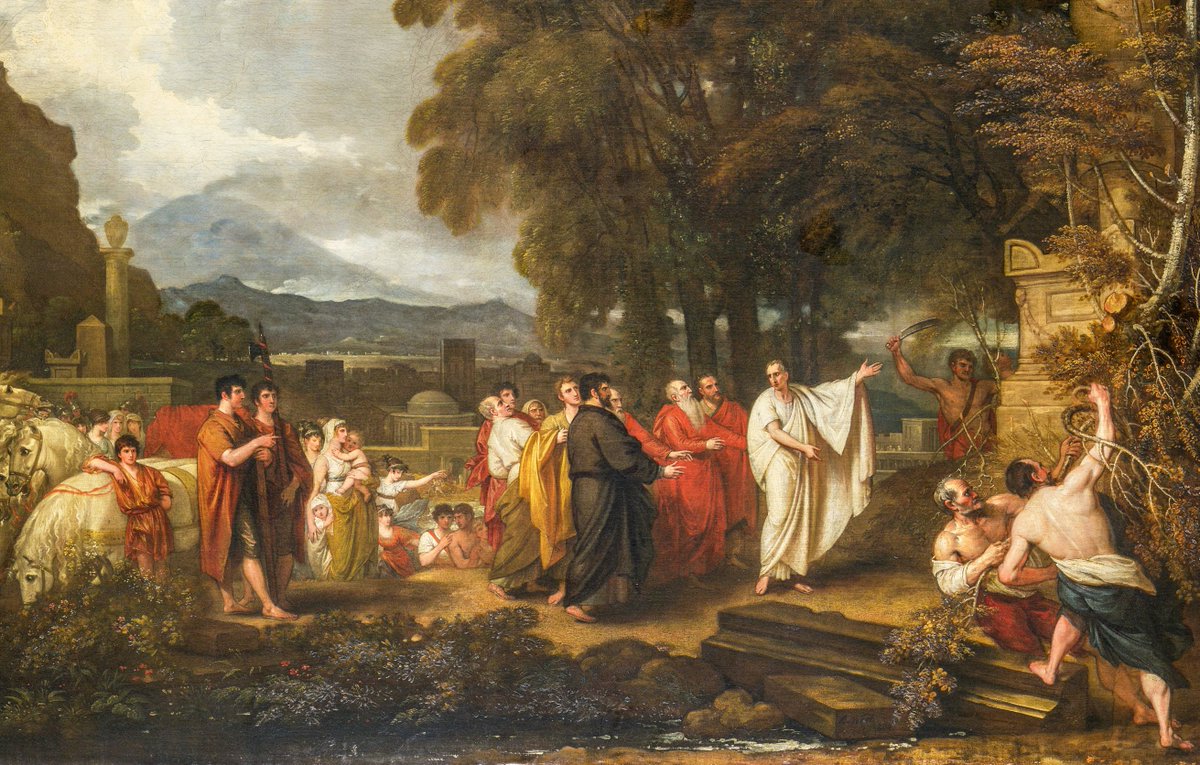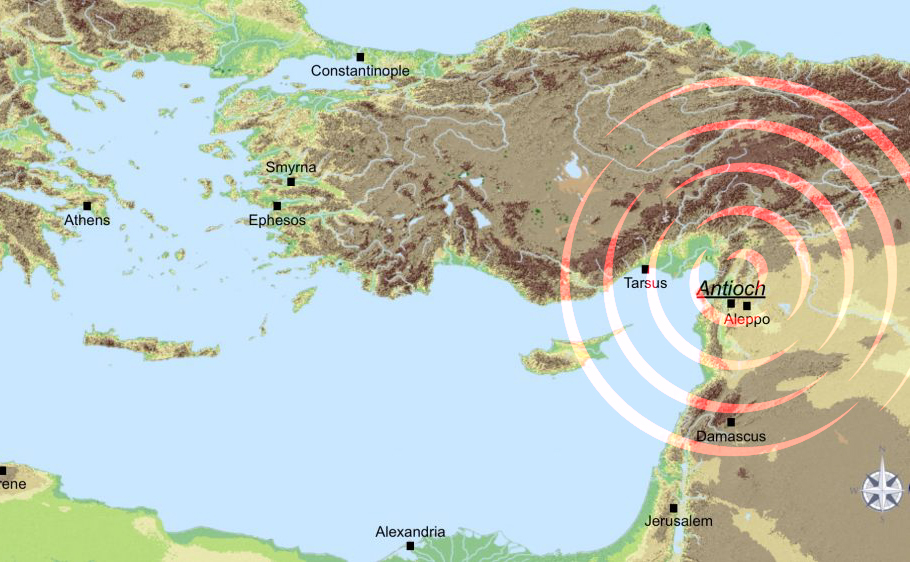1) A 20th century Roman temple to transportation.
The demolition of New York's original Pennsylvania Station in 1963 has been called 'an American tragedy' and 'an act of monumental vandalism'...
The demolition of New York's original Pennsylvania Station in 1963 has been called 'an American tragedy' and 'an act of monumental vandalism'...

2) The iconic original Penn Station was constructed in 1910, not by the city or state but by the private Pennsylvania Railroad Company who spent $114 million on the station and associated tunnels – roughly equivalent to $2.5 billion today... 

3) Designed by the famed architects McKim, Mead & White – who also designed the Washington Square Arch and Columbia University Library – the station was a grand celebration of classical architecture, largely modelled on the great Baths of Caracalla in Rome, completed in 216 AD. 

4) The main facade of the station stretched 132 metres along 7th Avenue, comprising a magnificent Doric colonnade of 30 columns which drew influence from landmarks such as the Propylaea gateway to the Athenian Acropolis and Bernini's Doric piazza of St Peter's Square in Rome. 

5) As well as the monumental central entrance for pedestrians, two pedimented entrances at each end allowed cars access to sunken carriageways where passengers could be dropped off and collected.




6) The greatest architectural revelation of the complex was undoubtedly its General Waiting Room. Spanning the entire length of the station, with vaults soaring 150-feet above the heads of passengers, the Waiting Room was modelled on the frigidarium halls of ancient Roman baths.. 

7) Notably the enormous frigidarium halls of the Baths of Caracalla and the Baths of Diocletian. The scale of these great halls is still seen in the surviving frigidarium of the Baths of Diocletian (built c.300 AD), repurposed into a Christian basilica by Michelangelo in 1563. 

8) The Waiting Room, like much of the station's interiors, was clad in travertine marble quarried in the hills of Tivoli, Italy – the same quarries used by the ancient Romans to source the stone for the Colosseum. 

9) The ceilings and vaults of the Waiting Room incorporated the recessed octagonal coffers used as both a weight-saving and decorative feature on wide-spanning ancient vaults. A fine example of these particular coffers is preserved in the remains of Rome's Basilica of Maxentius. 

10) High clerestory windows, also inspired by the windows of Roman baths, flooded the Waiting Room in natural light. The clerestory windows from such monumental Roman spaces would evolve into the large elevated windows illuminating the naves of Christian basilicas and cathedrals. 

11) The interiors of the station appeared as faithfully recreated classical constructions raised in solid stone, though in a concession to modernity the station was actually built around a steel framework comprising over 27,000 tons of steel. 

12) The vaulted coffered ceiling of the Waiting Room was equally contrasted and complimented by the steel of the adjacent train Concourse. Though raised in steel and glass, once again flooding travellers in natural light, the Concourse utilised the same high groin vaults.




13) For five decades the original Pennsylvania Station 'made travellers feel important', seeing the city through World War I, the Roaring Twenties and Prohibition, the Great Depression, and World War II. In 1945 alone, more than 100 million passengers travelled through Penn… https://t.co/ewvMrCjcKZtwitter.com/i/web/status/1…
15) By the 1950's and 60's, decades of grime had been allowed to build up on the once-shimmering pink granite and white travertine of the station; marring its beauty in some eyes, but to others simply the patina of its rich history layered on the walls. 

16) The unapologetically classical Penn Station soon found itself under assault by authorities who judged anything more than a few decades old to be wholly suspect, while all things 'modern' or 'contemporary' were unquestioningly good. Compounding these changing attitudes was.. 

17) ..the boom in air travel as a glamourous alternative to rail. Facing bankruptcy amidst the decline of the railroads, the Pennsylvania Railroad Company was forced to sell the building to a developer who quickly earmarked it for demolition. 

18) At the time the The New York Times wrote: 'Until the first blow fell, no one was convinced that Penn Station really would be demolished, or that New York would permit this monumental act of vandalism against the largest and finest landmark of its age of Roman elegance.' 

19) Despite outcry from architects, intellectuals, and a few concerned citizens – some of whom protested outside the station holding banners with slogans like 'Don't demolish it! Polish it!' – demolition of the station commenced on October 28, 1963. 

20) As demolition teams pulled down the station's vaults and columns, architectural critic Ada Louise Huxtable wrote: 'The tragedy is not only that our own times could not produce such a building, but that we cannot even maintain it.' 

21) Much of the carved stonework from Penn Station was taken away to be buried in landfill or dumped in New Jersey Meadowlands. Today fragments continue to come to light; like these two eagles (of the 22 that once adorned the station) sat in the corner of a Newark car park.




22) The original station building was replaced by the arena of Madison Square Garden, a modernist office block, and associated car parking, with all rail facilities moved underground... 

23) The crowded subterranean station has since been labelled a 'hellhole' by one NYC governor and 'seven levels of catacombs' by another. The architectural historian Vincent Scully wrote that where 'One used to enter the city like a god; one scuttles in now like a rat.' 

24) New Yorkers had largely watched in silence as mansions and monuments of the Gilded Age fell to the wrecking ball, yet the destruction of Penn Station sparked a backlash. It led directly to the foundation of the Landmarks Preservation Commission and new laws that sought to… https://t.co/KTkyTUBU51twitter.com/i/web/status/1…


25) As the city looks for a solution to the cramped and dismal facilities of the current station, a campaign to Rebuild Penn Station exactly as it once was has gained increasing attention. The project has created a detailed proposal for the station to be restored to its full… https://t.co/JfggWROErttwitter.com/i/web/status/1…
26) A virtual view of the possible rebuilding of Penn Station. Though Madison Square Garden would need to be relocated, the Garden has already moved three times in its history and the special zoning permit of the ageing arena conveniently ends in 2023. 

27) A final view of the original Penn Station (1910-1963) in all its classical glory.
Those interested in the Rebuild Penn Station Project can read more about it here:
*End of thread* https://t.co/S7gXFszdpgrebuildpennstation.org

Those interested in the Rebuild Penn Station Project can read more about it here:
*End of thread* https://t.co/S7gXFszdpgrebuildpennstation.org

• • •
Missing some Tweet in this thread? You can try to
force a refresh

 Read on Twitter
Read on Twitter























